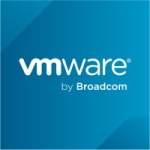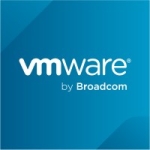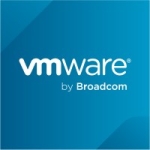What is our primary use case?
We use the Reserved Instances and the recommendations of sizing of our family types in Azure. We use it for cost optimization for our workloads there.
We started with the on-prem solution, but then we went with the SaaS model. Now, Turbonomic handles the installation and the support of the appliances.
How has it helped my organization?
The volumes feature lets us know which volumes or disks are not attached or that are not being used anymore and that we can go ahead and delete them. It tells us how much money we'll be saving if we delete them. It's the same thing with Reserved Instances. It has that ability, that visibility, with those recommendations.
There is also the family type that tells you which family the VM is going to and how much you're going to be saving. Disk tiering is one of the latest features. If you go from premium to standard, it shows you just how much you're going to be saving. It makes those decisions based on metrics.
When it comes to cloud costs, to VMs, the solution is saving us about $30,000 a month. It has also definitely reduced our IT-related expenditures by about $40,000 per month. And when it comes to the human resource time involved in monitoring and optimizing our estate, it saves us about 20 hours a week.
What is most valuable?
The recommendation of the family types is a huge help because it has saved us a lot of money. We use it primarily for that. Another thing that Turbonomic provides us with is a single platform that manages the full application stack and that's something I really like.
One other useful feature in Turbonomic is the support for Kubernetes. That's one of the things that I have worked on with Kevin, our account rep, from Turbonomic. We're going to work on setting that up because our developers are pushing hard for Kubernetes for containers this year. Knowing that it's supporting that is awesome.
Something that Turbonomic started doing, just a couple of months ago with one of their latest releases, is the potential savings when it comes to disks. It is very promising. They make recommendations based on the type of disks. For example, if you're using a premium SSD, it makes recommendations, based on I/O metrics, to go to a standard SSD. Those types of recommendations are very valuable and that's another area where we see cost savings, which is awesome.
What needs improvement?
One ask that I'm waiting for, now that they have the ability to make recommendations for disks, for volumes, and disk tiering, is all about consumption. For example, we have a lot of VMs now, and these VMs use a lot of disks. Some of these servers have 8 TB disks, but they're only being used for 200 GBs. That's a lot of money that we're wasting. In Azure, it's not what you're using. You purchase the whole 8 TB disk and you pay for it. It doesn't matter how much you're using. So something that I've asked for from Turbonomic is recommendations based on disk utilization. In the example of the 8 TB disk where only 200 GBs are being used, based on the history, there should be a recommendation like, "You can safely use a 500 GB disk." That would create a lot of savings. And we would have more of a success rate than with the disk tiering, at least in our case.
Also, unfortunately, there is no support for cost optimization for networking.
For how long have I used the solution?
I've been using Turbonomic for about three years.
What do I think about the stability of the solution?
It was definitely more stable on-prem. The reason I say that is because we've had several times where we have run into licensing issues. I don't know why that has been the case, although they have been few and far between.
But when it has no issues, it runs just as if it were on-prem. The performance and the stability are not a problem.
What do I think about the scalability of the solution?
It's a mature product. It very quickly detects when new VMs, new workloads, are added. You don't have to wait long. The tool picks things up very quickly in our environment.
How are customer service and technical support?
Their technical support is excellent. I would rate them a nine out of 10. Whenever I send an email, they respond back. The only reason I don't give them a 10 is that I have been waiting for some time now on the Reserve Instances to work again. That's the only thing that has been a downer because we rely on them heavily. We are now having to use the Azure tool for that, and before the issue with Reserve Instances, we didn't have to. There's a lot of overlap between Azure on Turbonomic, but Turbonomic works better for us.
An aspect of the Turbonomic team that I have found, working with them over the years, is that whenever we've had an issue, they have always been willing to listen and to address it and to add the features we need. For example, when we started, Reserved Instances was really not up to par. But they listened to their customers and they started making changes. As time has gone on, the product has matured. They've incorporated a lot of the features that we've asked for into their appliance.
How was the initial setup?
We tried it first on-prem, years ago. We used to host it. I installed it and updated it, working with the Turbonomic team. When it was hosted in our environment, I was responsible for everything.
The initial setup was straightforward. Because it was an appliance, the deployment took about an hour to stand it up. We use VMware on-prem so it was done with an OVA file, and it was pretty much a "next-next" process because the OVA is already packaged with how the tool should be deployed. There are certain custom inputs needed, like the name of the appliance, and how much storage. But everything else was already pre-packaged. The configuration definitely took a little bit longer.
The only downside was that Turbonomic came out with many releases. The latest releases had the latest features, but it required continuous upgrades. If we wanted to take advantage of one feature we continued to have to upgrade the appliance on-prem. That is why, when we found out that they do have a SaaS model, we went with that instead. We wanted Turbonomic to worry about things like the licensing, the updates, et cetera. We don't have to worry about that at all now, and that has been a huge relief. That has saved us a lot of time, for sure.
We didn't have to do any type of migration to their SaaS offering. They took care of everything in the back end.
We have five engineers who use the product, including a networking engineer, a storage engineer, and our DevOps team.
Which other solutions did I evaluate?
There are competitors out there. Since we're in Azure, which is the only cloud vendor that we use today, it has something called cost Azure Advisor, to help you with costs. I've tried it because it comes with it and we're paying for it, but Turbonomic is a better tool for us. We always seem to gravitate more toward it because everything is right there in that single pane of glass. It gives you recommendations based on Reserve Instances, even though right now, unfortunately, that's not working 100 percent. It does a lot of things, like the family types and the deleted volumes, and that type of automation for us, which is awesome. Azure Advisor does give you that as well, but it doesn't have everything. We have to drill down in it and it's not easy to navigate.
What other advice do I have?
At one point the most valuable feature for us was Reserved Instances. The only problem with that today is that last year we changed from the EA licensing model to an MCA. At this moment, unfortunately, the Reserved Instances is not working. They're still working on it. It's in the roadmap, but that definitely was a big selling point for us. It worked well for us because we purchase a lot of Reserved Instances for our VMs.
Turbonomic makes a lot of recommendations to help prevent resource starvation. We can't implement all of them because it depends on our workloads. Not all the recommendations work for us because workloads on some of our VMs are very seasonal. There may be three times throughout the year, for about two weeks, where those VMs' usage is very high. They have to work at a high level. The solution can only go back a maximum of three months, and it won't work for us in some of those workloads because it doesn't have full visibility into the past year. But for some of our other workloads, those recommendations work.
Optimization of application performance is an ongoing process for us, especially as we move VMs from on-prem to Azure, or even build new VMs in Azure. More apps are being created and more services are being created, and we're taking advantage of that within Azure. However, we don't use Turbonomic's automation mode to continuously assure application performance by having the software manage resources in real-time. Our DevOps team is using Azure to control that automation.
For us, Turbonomic is an infrastructure service, VMs. As for applications, not yet, because now that we're introducing Kubernetes into our Azure environment, while it does have support for that, I don't know what it looks like yet. I have a meeting scheduled with them in order to configure that. It doesn't create it for you automatically in the back end. But it's more for our IaaS, infrastructure as a service. For storage, the closest thing now is the disk tiering with recommendations for going from and to different types of standard and premium SSD and HDD disks. Before, there wasn't that level of support. It was just VMs and family types, in our case.
We use manual execution for implementing the solution’s actions. We use manual because it depends on the business. We run a 24/7 shop. That's how it has always been on-prem, and that's how it is now in Azure, for our production VMs. We need to schedule maintenance windows because some of the recommendations from Turbonomic require a reboot. We need to schedule downtime with the application owners within the business.
Disclosure: PeerSpot contacted the reviewer to collect the review and to validate authenticity. The reviewer was referred by the vendor, but the review is not subject to editing or approval by the vendor.

















